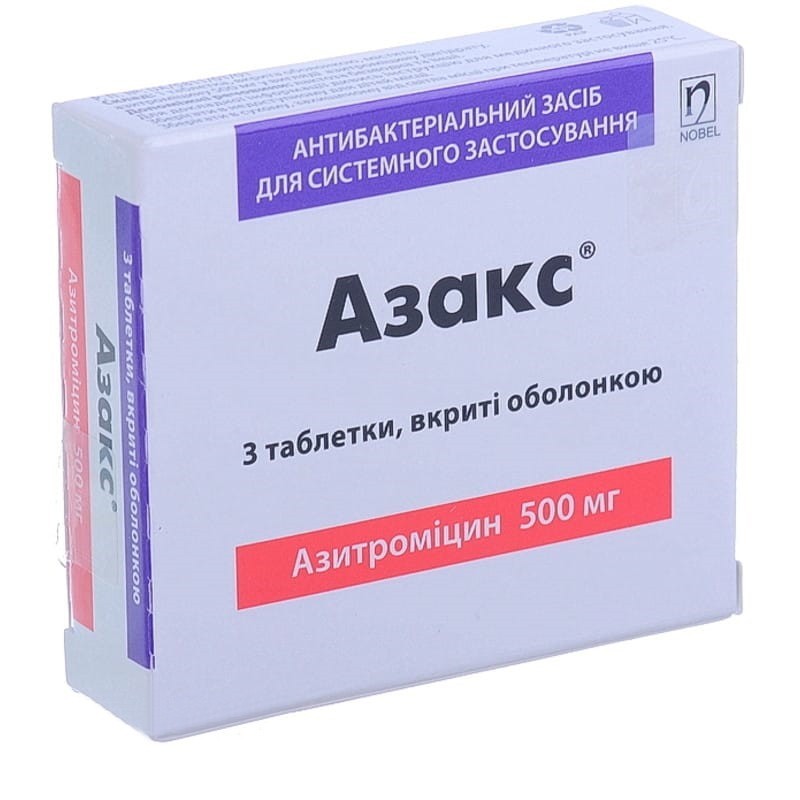



 Secure and encrypted payment processing
Secure and encrypted payment processing We ship to over 40 countries including the USA, UK, Europe, Australia and Japan
We ship to over 40 countries including the USA, UK, Europe, Australia and Japan Guaranteed refund or reship if you haven't received your order
Guaranteed refund or reship if you haven't received your orderazithromycin is a representative of the macrolide antibiotic group - azalides, has a wide range of antimicrobial effects. the mechanism of action of azithromycin is the inhibition of bacterial protein synthesis by binding to the 50s subunit of ribosomes and preventing translocation of peptides in the absence of an effect on the synthesis of polynucleotides.
Resistance Mechanism: Resistance to azithromycin can be congenital or acquired. Complete cross-resistance exists among Streptococcus pneumoniae, group A β-hemolytic streptococcus, Enterococcus faecalis and Staphylococcus aureus, including methicillin-resistant Staphylococcus aureus (MRSA) to erythromycin, azithromycin, other macrolides and lincosamides.
The antimicrobial spectrum of azithromycin:
| Sensitive |
| Aerobic gram-positive bacteria |
| Staphylococcus aureus methicillin-sensitive |
| Streptococcus pneumoniae penicillin-sensitive |
| Streptococcus pyogenes (column A) |
| Aerobic gram-negative bacteria |
| Haemophilus influenzae Haemophilus parainfluenzae |
| Legionella pneumophila |
| Moraxella catarrhalis |
| Pasteurella multocida |
| Anaerobic bacteria |
| Clostridium perfringens |
| Fusobacterium spp. |
| Prevotella spp. |
| Porphyromonas spp. |
| Other bacteria |
| Chlamydia trachomatis |
| Species that acquire resistance in individual cases |
| Aerobic gram-positive bacteria Streptococcus pneumoniae With intermediate sensitivity to penicillin Penicillin-resistant |
| Congenital resistance |
| Aerobic gram-positive bacteria Enterococcus faecalis |
| Staphylococcus MRSA, MRSE (methicillin-resistant Staphylococcus aureus) |
| Anaerobic bacteria The bacteroid group Bacteroides fragilis |
Pharmacokinetics The bioavailability after oral administration is approximately 37%. Cmax in blood plasma is achieved 2-3 hours after taking the drug.
When administered orally, azithromycin is distributed throughout the body. In pharmacokinetic studies, it was shown that the concentration of azithromycin in tissues is significantly higher (50 times) than in blood plasma, which indicates a strong binding of the drug to tissues.
Binding to plasma proteins varies depending on plasma concentrations and ranges from 12% at 0.5 μg / ml to 52% at 0.05 μg / ml in blood plasma. The apparent volume of distribution in equilibrium (VVss) was 31.1 l / kg.
Final t½ in blood plasma completely coincides with T½ in tissues for 2–4 days.
About 12% of the iv dose of azithromycin is excreted unchanged in the urine over the next 3 days. Especially high concentrations of unchanged azithromycin were detected in bile. Also, 10 metabolites were detected in bile, which were formed by N- and O-demethylation, hydroxylation of desosamine and aglycone rings, cleavage of conjugate cladinose. Comparison of the results of liquid chromatography and microbiological analyzes showed that the metabolites of azithromycin are not microbiologically active.
Infections caused by microorganisms sensitive to azithromycin:
Azax is taken orally 1 time per day, at least 1 hour before or 2 hours after a meal.
For adults and children weighing 45 kg: with infections of the respiratory tract, skin and soft tissues (except for chronic migratory erythema): 500 mg for 3 days.
In chronic erythema migrans: 1 g on the 1st day, then 500 mg each from the 2nd to the 5th day.
If you miss one dose of the drug, you should take the missed dose as soon as possible, and the next with the usual interval of 24 hours.
Uncomplicated and complicated urethritis / cervicitis: once 1 g (2 tablets of 500 mg). Heading dose - 1 g.
With renal failure with slight renal dysfunction (creatinine clearance 40 ml / min), there is no need for treason